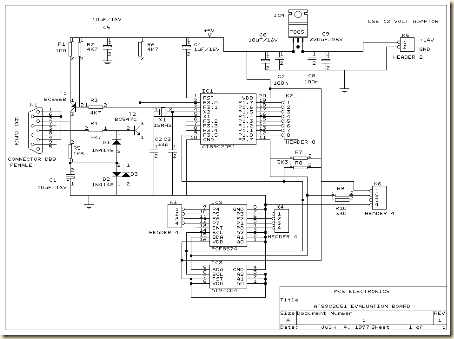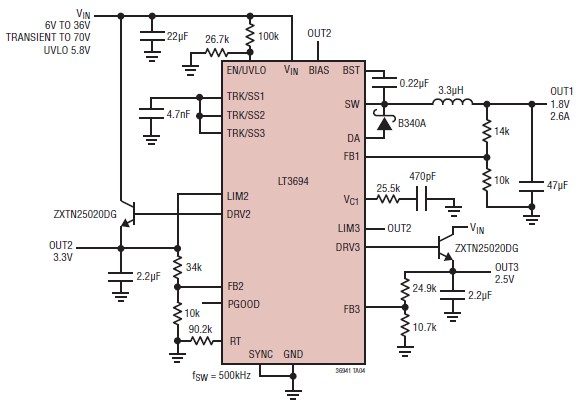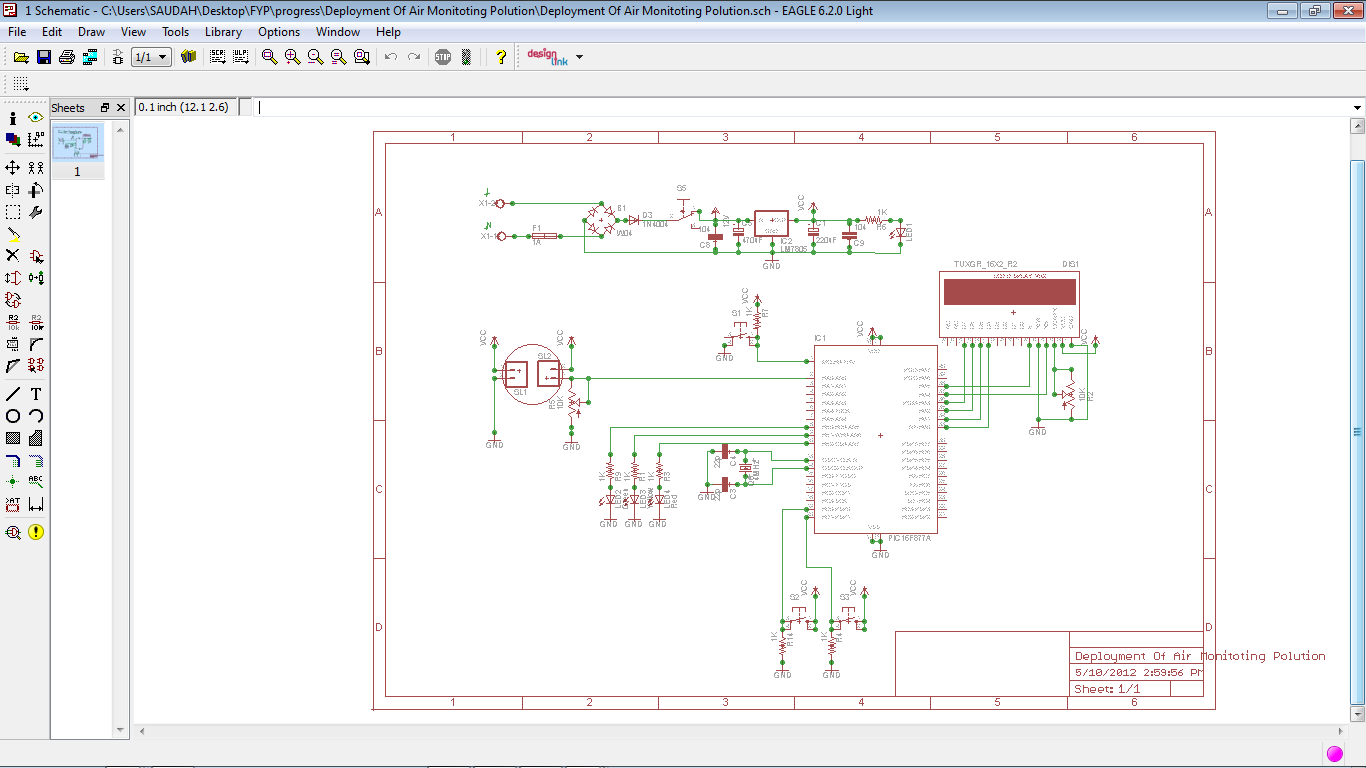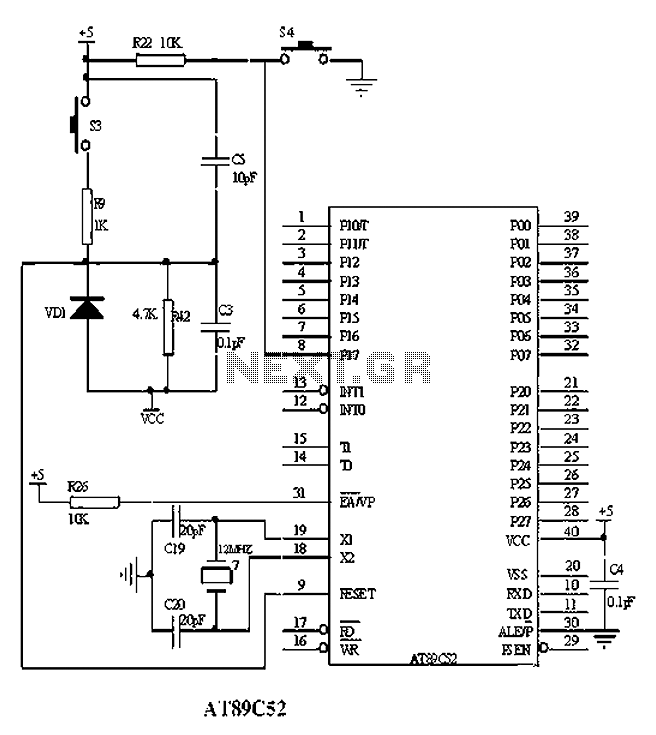
System AT89C2051 and AT89C4051

The circuit is better referred to as the Evaluation Board for the AT89C2051 and AT89C4051 microcontrollers. This Minimum System Evaluation Board for the AT89C2051 and AT89C4051 offers several advantages in terms of hardware support.
The Evaluation Board for the AT89C2051 and AT89C4051 microcontrollers is designed to facilitate the development and testing of applications based on these devices. It typically includes a microcontroller socket compatible with both the AT89C2051 and AT89C4051, allowing for easy swapping between the two chips.
The board often features essential components such as power supply circuits, crystal oscillators for clock generation, and necessary passive components like resistors and capacitors. It may also include LED indicators for status monitoring, push buttons for user input, and communication interfaces like UART for serial communication.
Moreover, the Evaluation Board is equipped with programming interfaces, allowing users to easily upload firmware to the microcontrollers. This feature is crucial for developers to test their applications in real-time. The board may also provide expansion headers for connecting additional peripherals, which enhances its functionality and versatility.
In summary, the Evaluation Board for the AT89C2051 and AT89C4051 microcontrollers serves as a comprehensive platform for prototyping and evaluating designs, streamlining the development process for embedded systems based on these devices. Its hardware support and features make it an invaluable tool for engineers and developers working with microcontroller applications.The circuit is more deserves to be called Evaluation Board AT89C2051 and AT89C4051. Some of the advantages of circuit Minimum System AT89C2051 / AT89C2051 and AT89C4051 Evaluation Board which I was present this time, hardware-hardware support below: 🔗 External reference
The Evaluation Board for the AT89C2051 and AT89C4051 microcontrollers is designed to facilitate the development and testing of applications based on these devices. It typically includes a microcontroller socket compatible with both the AT89C2051 and AT89C4051, allowing for easy swapping between the two chips.
The board often features essential components such as power supply circuits, crystal oscillators for clock generation, and necessary passive components like resistors and capacitors. It may also include LED indicators for status monitoring, push buttons for user input, and communication interfaces like UART for serial communication.
Moreover, the Evaluation Board is equipped with programming interfaces, allowing users to easily upload firmware to the microcontrollers. This feature is crucial for developers to test their applications in real-time. The board may also provide expansion headers for connecting additional peripherals, which enhances its functionality and versatility.
In summary, the Evaluation Board for the AT89C2051 and AT89C4051 microcontrollers serves as a comprehensive platform for prototyping and evaluating designs, streamlining the development process for embedded systems based on these devices. Its hardware support and features make it an invaluable tool for engineers and developers working with microcontroller applications.The circuit is more deserves to be called Evaluation Board AT89C2051 and AT89C4051. Some of the advantages of circuit Minimum System AT89C2051 / AT89C2051 and AT89C4051 Evaluation Board which I was present this time, hardware-hardware support below: 🔗 External reference
Warning: include(partials/cookie-banner.php): Failed to open stream: Permission denied in /var/www/html/nextgr/view-circuit.php on line 713
Warning: include(): Failed opening 'partials/cookie-banner.php' for inclusion (include_path='.:/usr/share/php') in /var/www/html/nextgr/view-circuit.php on line 713





